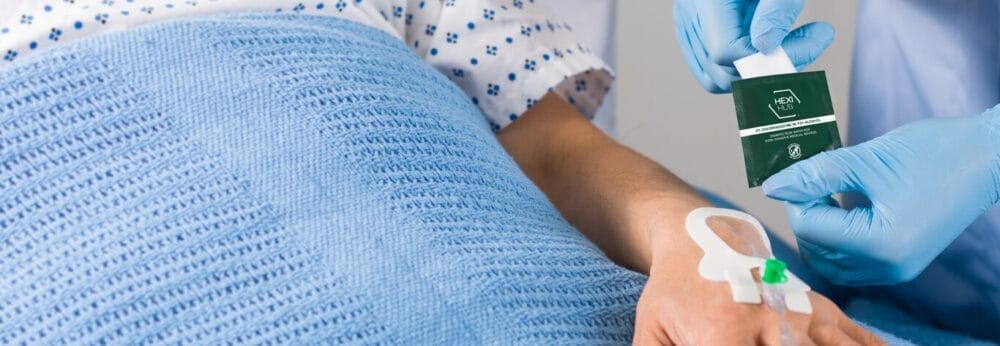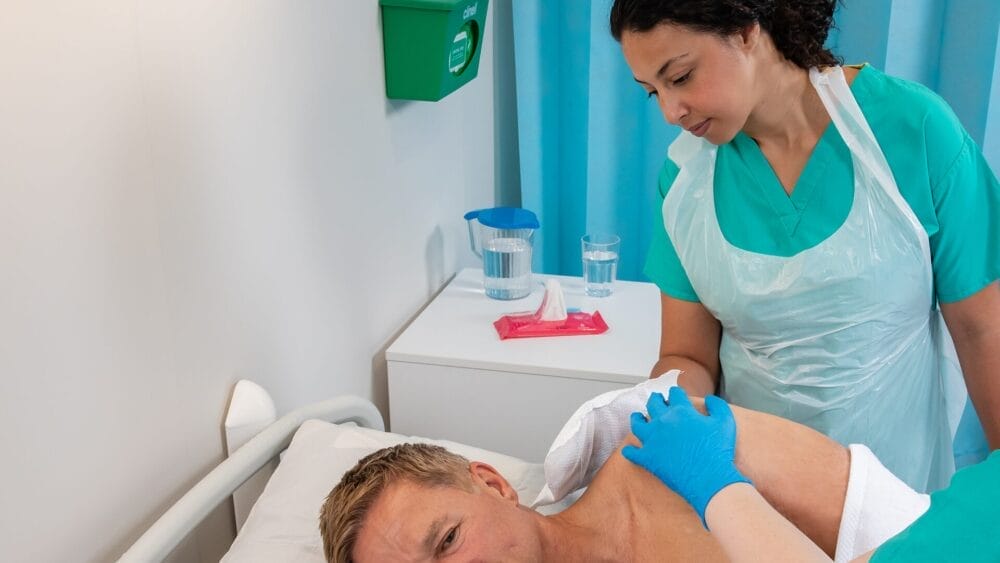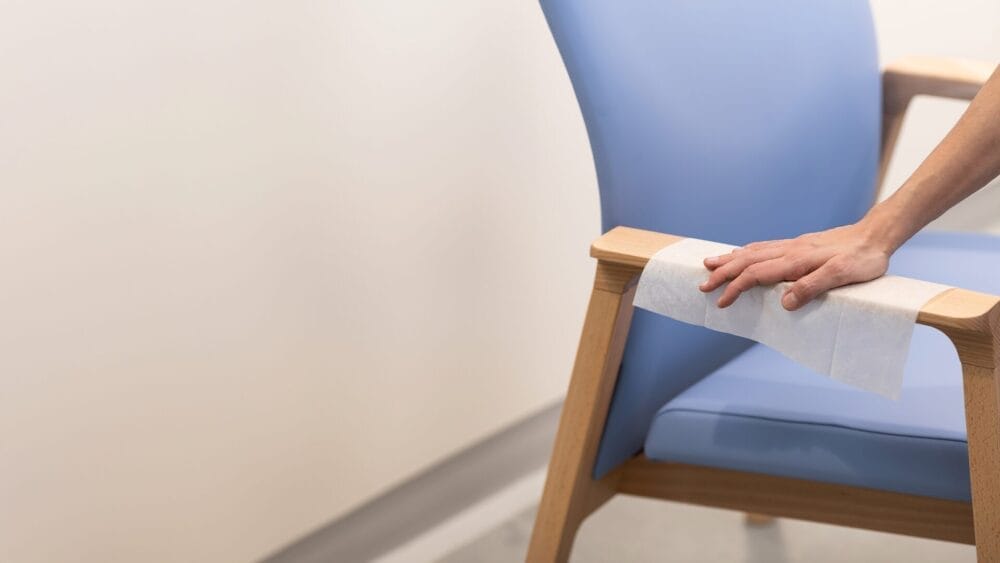Posted
8th July 2021
Research
The ubiquitous nature of microorganisms requires manufacturers to minimize the risk of contamination occurring, by designing quality assurance processes, training, and monitoring of their manufacturing systems. Whilst quality control procedures throughout the manufacturing process can help reduce the likelihood of contamination occurring, this is a continuous process where manufacturers review, refine and improve their procedures on an ongoing basis.
Contaminated products being used in healthcare is well-documented, microorganisms that have been identified include Pseudomonas spp, Salmonella spp, Serratia marcescens, Aspergillus sydowii and increasingly Burkholderia spp, to name a few. Burkholderia cepacia complex (Bcc) is a group of closely related Gram-negative bacteria, commonly found in environments such as water, soil and in association with plants. Bcc are closely related to Pseudomonas species of bacteria, which is also found in similar environments.
Bcc includes at least 20 closely related species such as B. cenocepacia and B. lata and B. contaminans are amongst the Bcc bacteria encountered most frequently as industrial contaminants(Lopez de Volder et al., 2021, Cunningham-Oakes et al, 2021 ). Bcc have also been isolated from non-sterile pharmaceutical products where its detection in the manufacturing process is difficult and product recalls are frequent (Ramsis et al., 2020). A recent review by the Food and Drug Administration in the USA found that almost 40% of contamination reports in both sterile and non-sterile pharmaceutical products were caused by Bcc bacteria.
Outbreaks of infection due to contaminated disinfectants have been reported since 1981 (Berkelman et al., 1981). Since that time, Bcc bacteria have been isolated from various products used in healthcare settings, including eyedrops, ultrasound gel, mouthwashes and pre moistened bathing wipes (Hell et al., 2011, Sommerstein et al., 2017 Zurita et al., 2014, Ko et al., 2015). This has been attributed to the organism’s ability to survive in the presence of preservatives and disinfectants and in low nutrient conditions. Knowledge in this area is increasing but this is not definitively known though current thinking is that this is most likely through the ability to form biofilm, thus protecting the organism from the biocides and the hostile external environment (Ogonowski et al., 2018).
A recent systematic review by Halifiger et al., (2020) examined 111 Bcc-related occurrences in a variety of healthcare settings. Most of which tended to be of a long duration as the organism can be difficult to identify. It also takes time for the cause to be determined due to the large number of potential sources to be examined. Importantly, the authors highlighted that none of the reports described whether the manufacturing process was assessed for the cause of the contamination and what steps were undertaken to enhance contamination prevention at the production site to prevent a future recurrence and to provide assurance of quality for future products (Halifiger et al., 2020).
Manufacturers are continuously revisiting the microbiological controls and the measures they have in place to minimise the risk of contamination by microorganisms and this includes the risk of Bcc product contamination occurring. A part of this is being able to detect for the presence of B. cepacia complex species in tested samples. The publication of USP 60 which requires the use of selective media for initial isolation of Bcc is a step in the right direction. But USP60 (or any other published standard) does not provide methodology for species level identification.
Incorrect species level identification of industrial contaminants, particularly with the closely related Bcc group is a problematic issue (Cunningham-Oakes et al, 2021). Advanced microbial identification strategies should help identify and minimise the risk of Bcc-contamination. Sharing of best practice in prevention and process improvements amongst companies and within industry groups, leveraging expertise from academia and regulatory authorities will further ensure rigorous preventative measures are in place.
Becker, Soeren Leif & Berger, Fabian & Feldner, Susanne & Karliova, Irem & Haber, Manfred & Mellmann, Alexander & Schäfers, Hans-Joachim & Gärtner, Barbara. (2018). Outbreak of Burkholderia cepacia complex infections associated with contaminated octenidine mouthwash solution, Germany, August to September 2018. Eurosurveillance. 23. 10.2807/1560-7917.ES.2018.23.42.1800540.
Berkelman, R & Lewin, S & Allen, J & Anderson, R & Budnick, L & Shapiro, S & Friedman, S & Nicholas, P & Holzman, R & Haley, Robert. (1981). Pseudobacteremia Attributed to Contamination of Povidone-Iodine with Pseudomonas cepacia. Annals of internal medicine. 95. 32-6. 10.7326/0003-4819-95-1-32.
Cunningham-Oakes, Edward & Pointon, Tom & Murphy, Barry & Campbell-Lee, Stuart & Webster, Gordon & Connor, Thomas & Mahenthiralingam, Eshwar & Cunningham Oakese,. (2021). Genomics reveals the novel species placement of industrial contaminant isolates incorrectly identified as Burkholderia lata. Microbial Genomics. 7. 564. 10.1099/mgen.0.000564.
Lopez De Volder, Ma. Agustina & Teves, Sergio & Isasmendi, A & Pinheiro, J & Ibarra, L & Breglia, N & Herrera, T & Vazquez, M & Hernández, Claudia & Degrossi, Jose. (2021). Distribution of Burkholderia cepacia complex species isolated from industrial processes and contaminated products in Argentina. International Microbiology. 10.1007/s10123-020-00151-z.
Fahmy, Marina & Saleh, Youssry & Khalil, Mary. (2020). Detection of Burkholderia cepacia in pharmaceutical products. Indian Journal of Microbiology Research. 7. 83-90. 10.18231/j.ijmr.2020.018.
Häfliger, Emmanuel & Atkinson, Andrew & Marschall, Jonas. (2020). Systematic review of healthcare-associated Burkholderia cepacia complex outbreaks: presentation, causes and outbreak control. Infection Prevention in Practice. 2. 100082. 10.1016/j.infpip.2020.100082.
Hell, Markus & Abel, C & Albrecht, Alexander & Wojna, A & Chmelizek, G & Kern, Jan & Maass, M & Apfalter, P. (2011). Burkholderia cepacia – outbreak in obstetric patients due to intrinsic contamination of non-sterile ultrasound gel. BMC Proceedings – BMC Proc. 5. 1-1. 10.1186/1753-6561-5-S6-O75.
Ko, Suhui & An, Hye-Sun & Bang, Ji Hwan & Park, Sang-Won. (2015). An outbreak of Burkholderia cepacia complex pseudobacteremia associated with intrinsically contaminated commercial 0.5% chlorhexidine solution. American journal of infection control. 43. 10.1016/j.ajic.2014.11.010.
Ogonowski, Martin & Motiei, Asa & Ininbergs, Karolina & Hell, Eva & Gerdes, Zandra & Udekwu, Klas & Bacsik, Zoltan & Gorokhova, Elena. (2018). Evidence for selective bacterial community structuring on microplastics. Environmental Microbiology. 20. 10.1111/1462-2920.14120.
Sommerstein, Rami & Führer, Urs & Lo Priore, Elia & Casanova, Carlo & Meinel, Dominik & Seth-Smith, Helena & Kronenberg, Andreas & Anresis, On & Koch, Daniel & Senn, Laurence & Widmer, Andreas & Egli, Adrian & Marschall, Jonas & Swissnoso, On. (2017). Burkholderia stabilis outbreak associated with contaminated commercially-available washing gloves, Switzerland, May 2015 to August 2016. Eurosurveillance: 22. 10.2807/1560-7917.ES.2017.22.49.17-00213.
Torbeck, Lynn & Raccasi, Diane & Guilfoyle, Dennis & Friedman, Richard & Hussong, David. (2011). Burkholderia cepacia: This Decision Is Overdue. PDA journal of pharmaceutical science and technology / PDA. 65. 535-43. 10.5731/pdajpst.2011.00793.
Zurita, Jeannete & Mejía Castañeda, Lorena & Zapata Mena, Sonia & Trueba, Gabriel & Vargas, Ana & Aguirre, Samanta & Falconi, Guillermo. (2014). Healthcare-associated respiratory tract infection and colonization in an intensive care unit caused by Burkholderia cepacia isolated in mouthwash. International Journal of Infectious Diseases. 29C. 96-99. 10.1016/j.ijid.2014.07.016.
SHARE THIS ARTICLE
Tags
Latest News
Embracing sustainability and cost savings: The journey of Clinell Indicator Notes to paper-based solutions
At GAMA Healthcare, we’ve always prided ourselves on being at…
Introducing HEXI HUB: A seamless transition in our product line
We’re pleased to announce an update to our product offering…
Innovative solutions for tackling Carbapenemase-producing Enterobacteriaceae (CPE) at King’s College Hospitals
King’s College Hospital NHS Foundation Trust, one of London’s largest…
Gloves Off: reducing unnecessary plastic waste during environmental cleaning and disinfection
In this blog, Dr Phil Norville discusses the momentum-gaining ‘Gloves…




